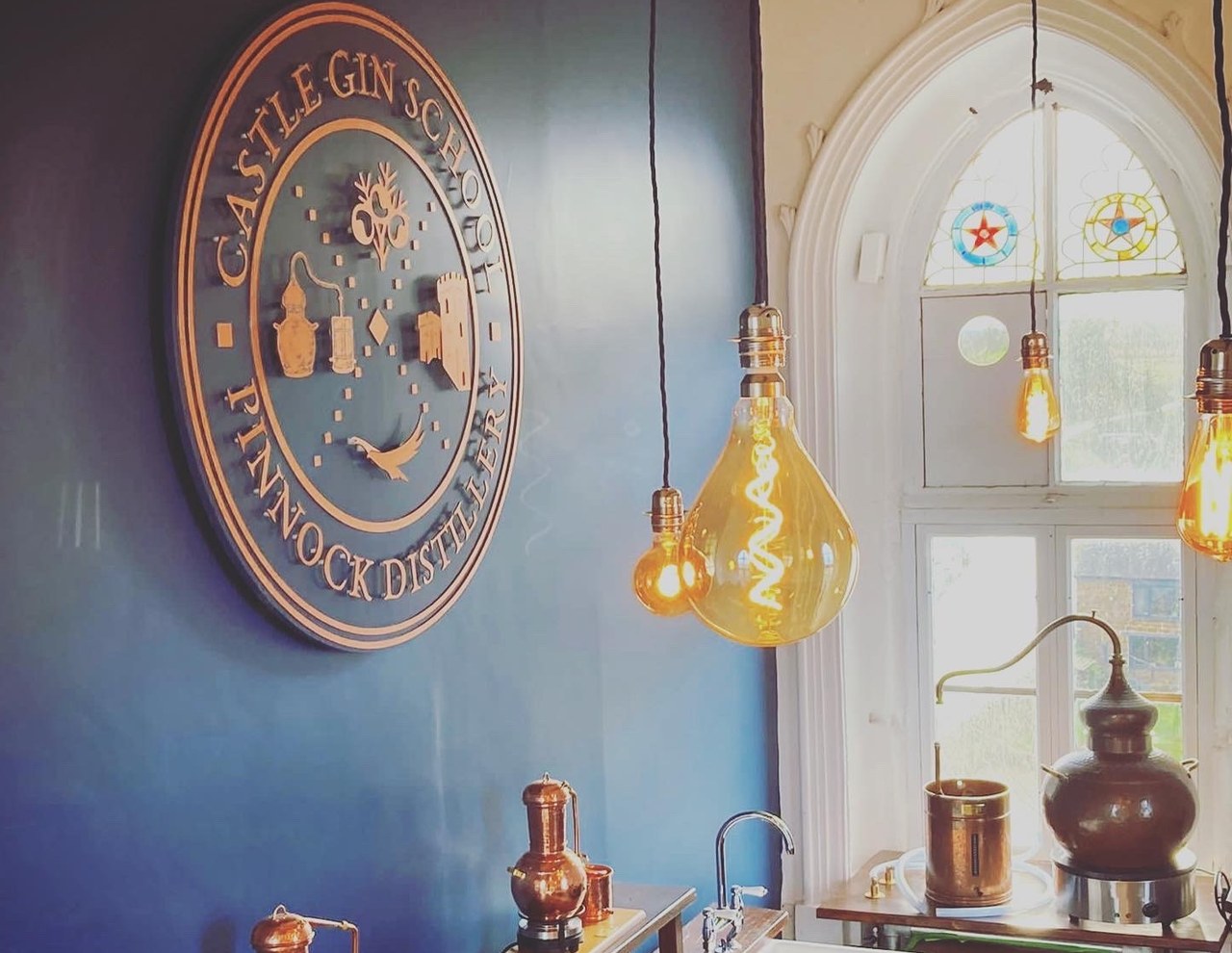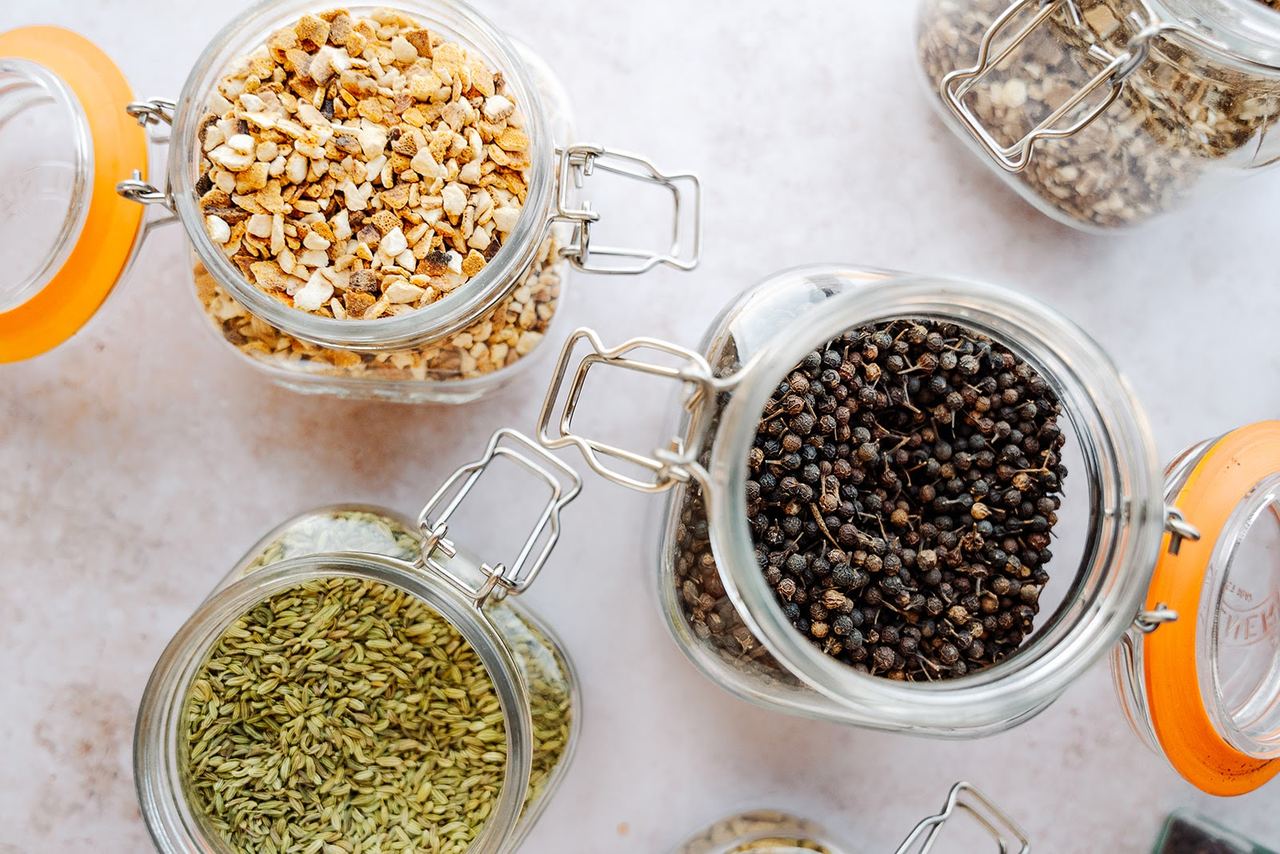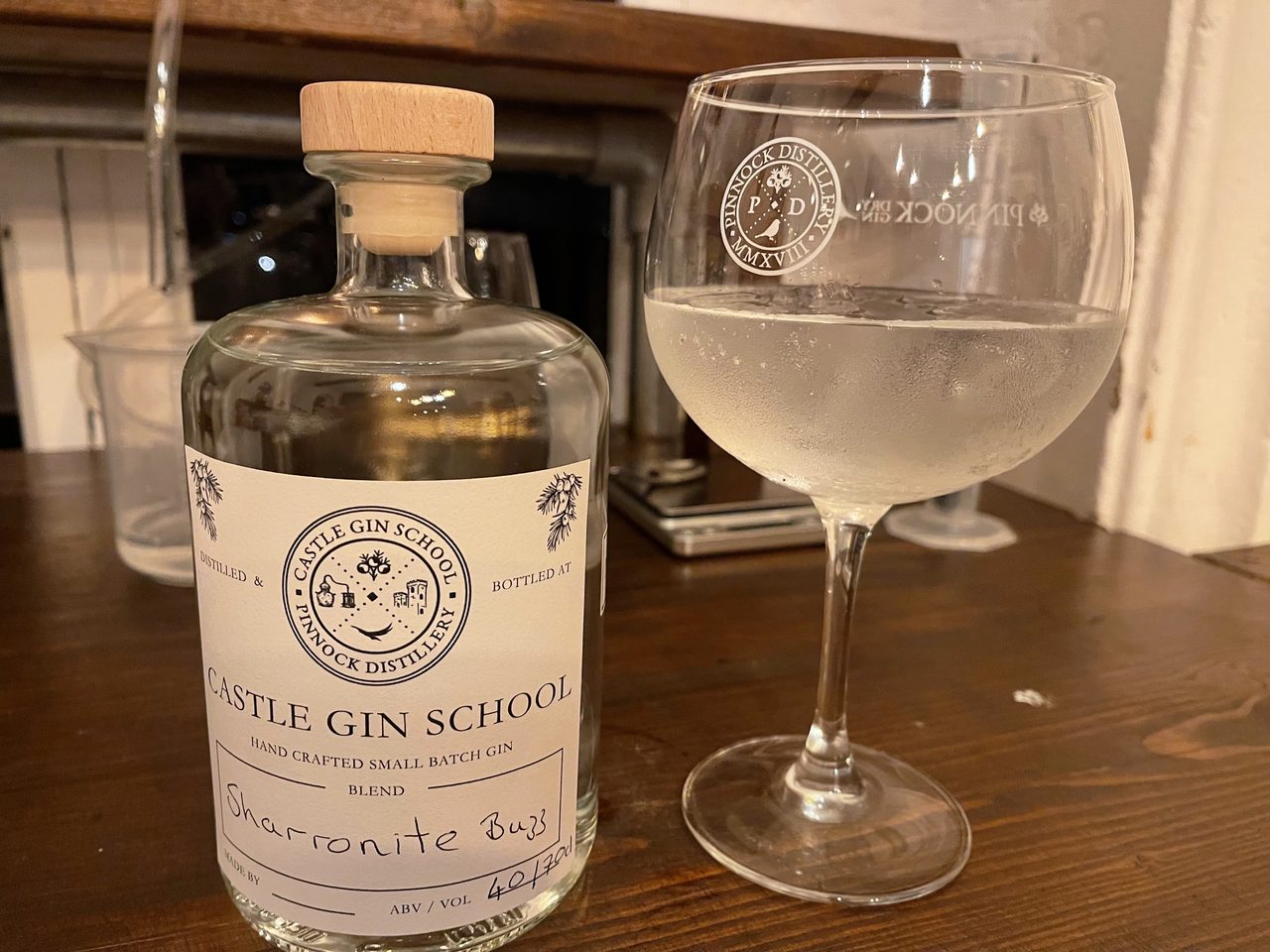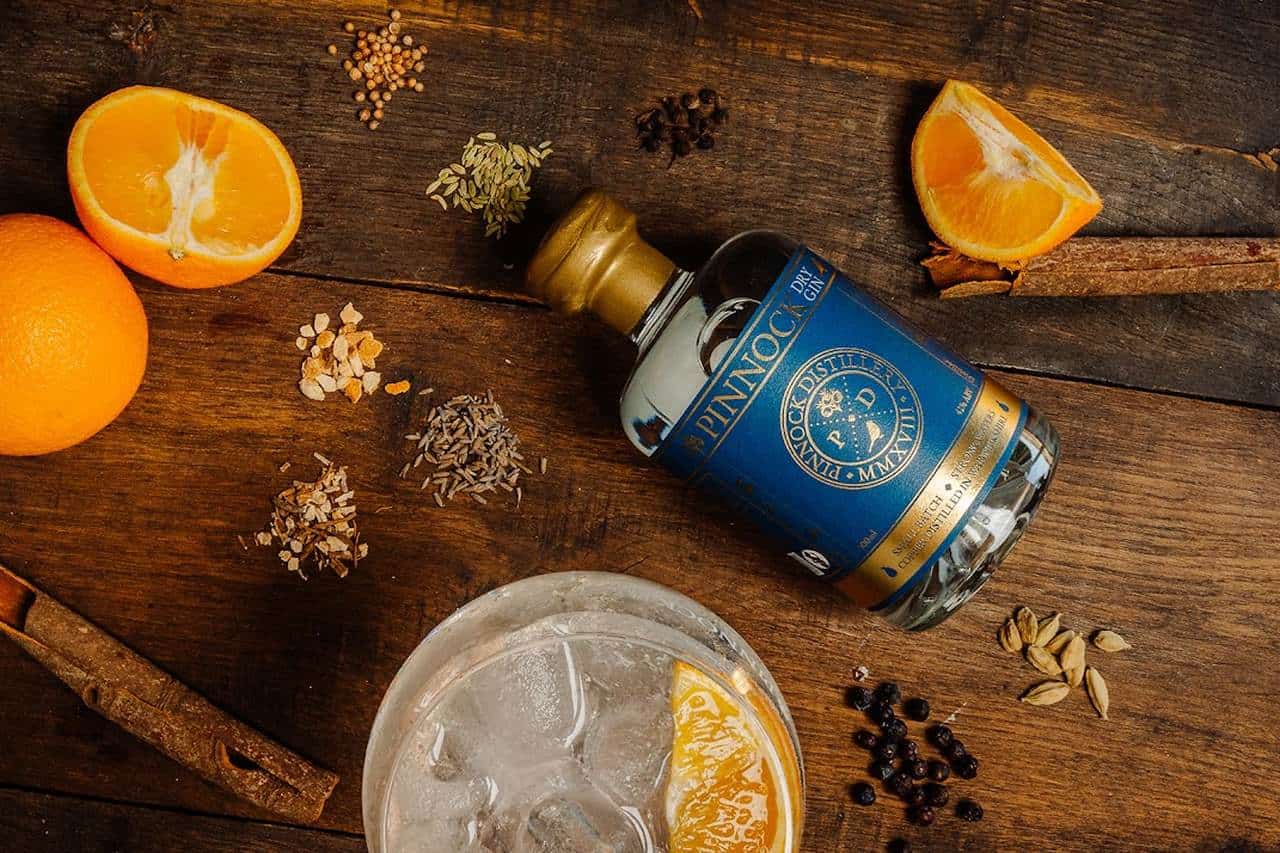I had to cross the drawbridge and make my way up a tight spiral staircase to the top of the tower at Castle at Edgehill, to find the Pinnock Gin Distillery. This is where the Castle Gin School resides.
It is run and owned by former college lecturer, Dan Becket and his team who invited me into the small classroom with large gestures of joyful warmth. I imagined a huge distillery with vats bubbling over yet Dan’s copper still was just 40 litres. He explained:
I keep it small so that this remains a craft gin. Once you go into mass production, I can no longer call it “Craft Gin”.

Pinnock Distillery is named after the cottage where Dan’s small-batch, copper distilled dry gin is produced. His aim is to teach students how to create their own unique gins.
Interestingly the region is where Charles I staked his flag and then later lost his head in a battle of the English civil war. Turns out he was the first ruler to tax alcohol or “strong waters” as it was known then.
I was about to learn how to distil my own strong waters and as a gin lover, this was thrilling. The classroom has six or so traditional copper alembic stills and a colourful corner of citrus, herbal, floral and spice botanicals. The pots already contained alcohol and water and so now the focus was on the taste – the botanicals.
We started by tasting the Pinnock gins (Dan’s own gins) with a talk about their flavours. We could pick up on rhubarb, lavender, honey and citrus flavours. Then we were handed full gin and tonic of our choice and once in hand, Dan began by suggesting:
Think about when in your in the kitchen. What works well. For example black pepper and strawberry work well together.

Dan explained that the botanicals have a hierarchy of ingredients. The must-haves are called “the essentials” and you could opt to use just those and get a pretty classic gin.
The base is always Juniper. This gives the earthy pine nose and distinct gin flavour and depending on how full-on you want it you can add 10-20gms. Gins like Beefeater or Tanquery will have the full 20gms.
I chose to go lighter with 15gms. Then added two more essentials; 1gm of coriander seed for lemon notes and .3gm of liquorice which adds a certain sweetness.
Then I chose a fixative. This is a root that acts to bind the flavours together. It was either the punchy Angelica root to add an earthy note or the Orris root which lends a floral dimension. I added a 1/4 teaspoon Orris. Dan pointed out that Cassia, also on the essential list, adds something fiery. I stayed away from that.
I then chose my flavours. I wanted something citrus and there were several fruit peels on the ingredients list. I went for grapefruit peel for its lemon-orange freshness. From the herbal menu, I went for mint, just a smidgeon. I also wanted to mix in something tropical and added a little mango, my favourite fruit.
I then added my chosen botanicals to the pot, gave it a quick stir then it was all-go. The pot was placed on the pre-heated hotplate, the lid was sealed to avoid alcohol escaping and all joints were tightened and the condenser was filled with cold water. The temperature rose to 75c and now all we had to do was to wait for the alcohol to flow out of the tap.
I watched as the first 20 drops of Heads emerged. These had to be thrown away to avoid a metallic taste. The end of the process was the exciting moment of measuring total ABV. I managed a 40% alcohol. The tails of the gin had to be discarded too. So I added a little water to bring it up to 70cl, gave the bottle a shake and all that was left was to taste it.

I could detect all the flavours, the fruity tones and the subtle aromas, and it was delicious.
Everyone in the class had their own concoction, some went with cocoa beans, other honey which helps to cut through the tonic and even chamomile. They all seemed happy with their creations.
Finally, I chose a name for my gin, labelled it. It is called the “Sharronite Buzz” and though you won’t find it in the shops or bar, making it gave me quite a buzz.
Verdict: If you love gin, this three-hour course – which includes tastings and three G&Ts is not only great value it is a no-brainer. And the delight of sharing your own gin with friends affords no end of kudos.
To book visit: Pinnock Distillery
How much: £99 for 1 or £125 for 2 (to share). This includes tastings of the Pinnock Gin range and 3 complimentary G&Ts

